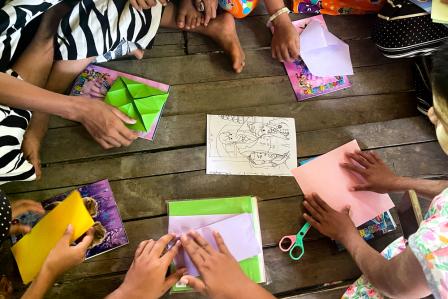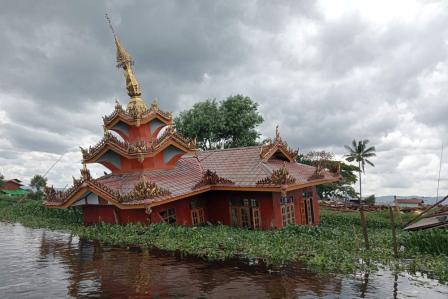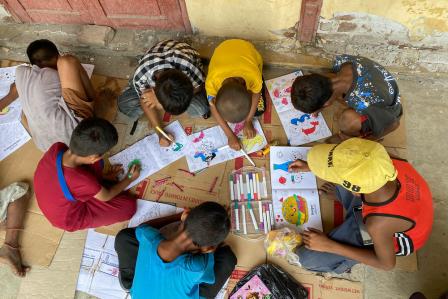
Destruction caused by the earthquake in Kumae township, Myanmar, photographed 30 March 2025 | Myanmar 2025 © MSF
In response to the 7.7-magnitude earthquake that hit Myanmar on March 28, Doctors Without Borders teams made up of medical, logistics, and water and sanitation staff are assessing affected areas in Mandalay and southern Shan state. The full scale of the damage and medical needs is still unknown due to communication blackouts and the difficulty of reaching the hardest-hit areas amid ongoing conflict.
Earthquake destruction in Myanmar
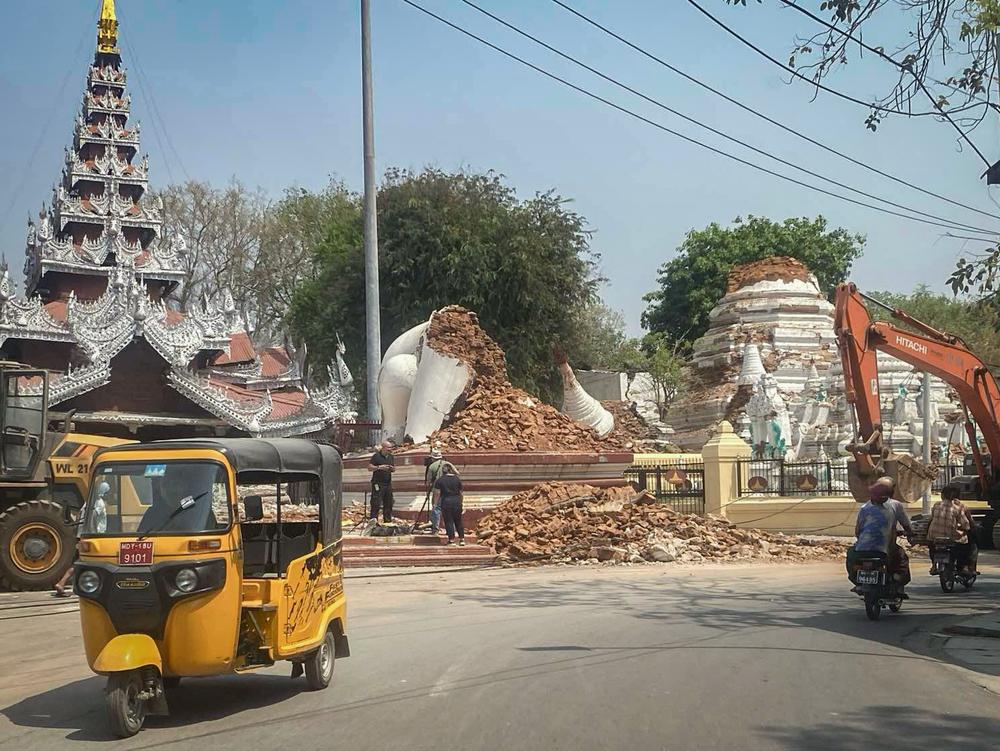
Destruction caused by the earthquake in Mandalay, Myanmar
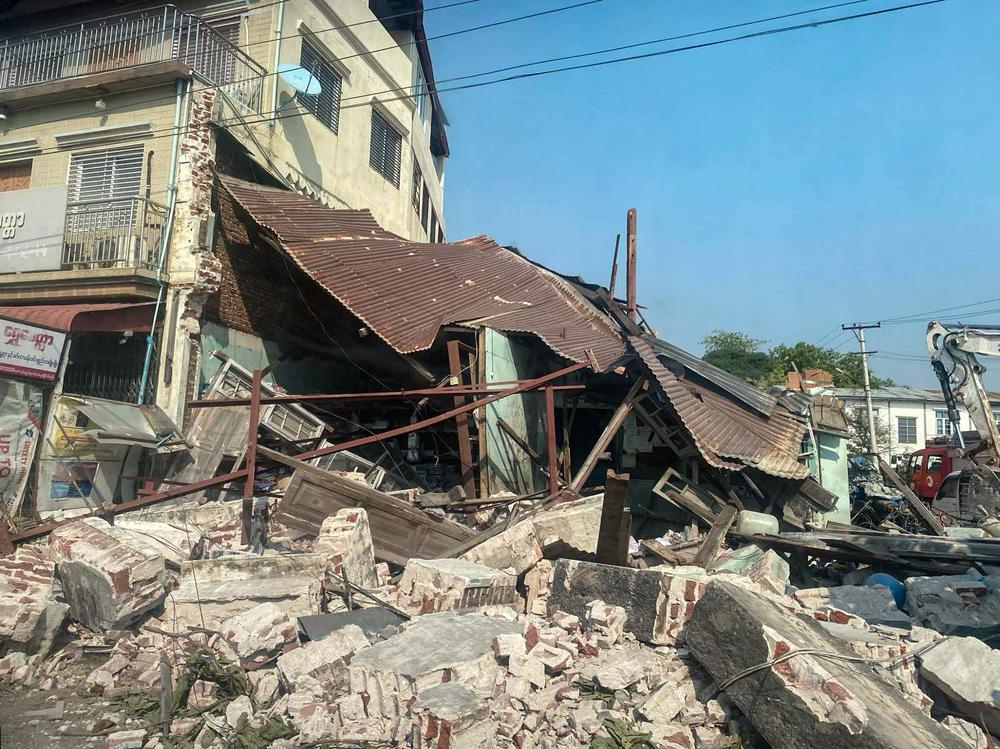
Destruction caused by the earthquake in Mandalay, Myanmar

Temporary IDP camp in U Pwar Pagoda Compound in Mandalay
_0321c.jpg?itok=IxUmemQg)
Drinking water in temporary IDP camp in U Pwar Pagoda Compound in Mandalay
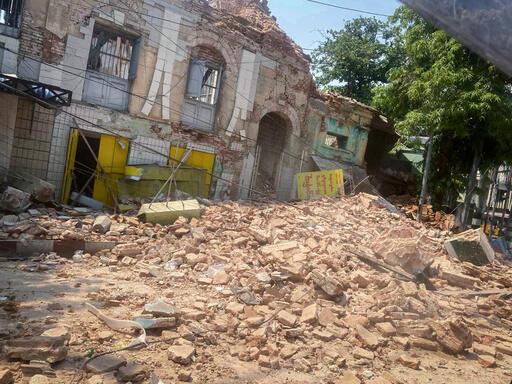
Destruction caused by the earthquake in Mandalay
Myanmar Earthquake Impact
- Schools, mosques, monasteries, government offices, and 1,000-bed Naypyitaw Hospital have been affected.
- Yangon-Mandalay highway as well as Innwa and Dokhtawaddy bridges are reported to be damaged or collapsed.
- The number of destroyed homes is still unknown.
- Power outages have affected the entire country, including Yangon, with phone and internet services also disrupted.
- Swift access to affected areas critical
From Paul Brockmann, operations manager for Myanmar, Bangladesh and Malaysia of Doctors Without Borders:
"Our medical humanitarian staff in Myanmar and neighboring countries have the capacity to respond at scale to the needs of affected communities as soon as authorities facilitate swift and unhindered access for teams to do assessments and provide medical care.
Given the scale and intensity of the earthquake, the impact on people could be devastating, particularly for those who require immediate lifesaving assistance due to trauma injuries. We’re also concerned about those who will be vulnerable after losing shelter, access to general health care, and safe drinking water, which is crucial to control the possible spread of waterborne diseases.
The ability to deploy assessment teams and, ideally, surgical capacity, are critical in the first hours and days after any earthquake if we hope to respond with life and limb-saving surgical care for people injured.
To enable an effective response, swift access to affected areas and timely approval of essential supplies and personnel are critical."
- Complicated situation due to ongoing conflict
From Federica Franco, head of mission of Doctors Without Borders in Myanmar
"While we are not in the areas that have been most impacted by the earthquake, all of our teams in the country really felt it, and all of our offices were also evacuated. It was a particularly long [earthquake], to be honest, which is also why it was scary for a lot of us.
Thankfully, all of our staff are safe, but we are deeply concerned about the people in the affected areas. At this time, it's quite hard to fully grasp the extent of the damage.
The situation is very complicated because there are significant communication blackouts in some of the hardest hit areas, and this is due to the ongoing conflict."
Challenges amid ongoing response
%20(2)cf93.png?itok=AlBEVBIQ)
Given the scale and intensity of the earthquake, the impact on people who require emergency trauma care for crush injuries can be devastating. This type of lifesaving assistance is an urgent need in the initial 72 hours after a disaster. We’re also concerned about people made vulnerable as a result of losing access to shelter, health care, and drinking water. Prompt medical aid efforts are crucial to control the spread of waterborne, vector-borne, or endemic diseases.
Health care facilities need stable power and clean water supplies to provide life- and limb-saving surgeries and deliveries. Damaged facilities may require urgent repair, temporary support structures, or replenished stocks of supplies that were lost or destroyed. Patients who rely on daily treatment to manage chronic conditions like HIV, tuberculosis (TB), diabetes, and hypertension will need close monitoring.
Doctors Without Borders in Myanmar
Doctors Without Borders has been working in Myanmar since 1992, with a focus on providing HIV and tuberculosis care, emergency responses to national disasters and conflict, as well as support to the persecuted Rohingya people in Rakhine state.
Will you support our emergency response work?
Help us provide lifesaving medical care during emergencies by making a donation today.
